The LVT-2 Water Buffalo
Compared to the LVT-1, this new model was a real step forward. It was designed to have better seaworthiness and, at the same time, better terrain characteristics thanks to two features. These were the much improved M3A1 powertrain, relocated to the back of the hull, and bolted-on aluminium track grousers (track cleats), designed to improve maintenance in the field. Indeed, sea water corrosion and the crossing of edgy reefs, quickly worn out these pieces. The main central compartment was left open and could carry 24 infantrymen and their equipment (5,950 lbs cargo capacity).The front driver compartment was revised. Heavy gun ports were available over the rear of the front cabin, and on each side of the main compartment, manned by infantrymen. Usually, the armament combination comprised two heavy cal.50 (12.7 mm) M2HBs at the front and two cal.30 (7.62 mm) M1919A4s aft, replaced later by masked M2s. British vehicles, mostly used in the swamps of the Netherlands and on the north-eastern German border, received Polsten cannons and, sometimes, Wasp flamethrowers.
The LTV-2(A) Buffalo II
This was a completely up-armored version designed in 1943 ("A" for armor), fitted with additional 0.4 in (10.16 mm) armor plates inside the main compartment, and outside to protect part of the side skirts, nose, and 0.5 in (12.7 mm) on the cab. Self-sealing gasoline tanks were also added. Heavier, these vehicles reached 2400 pounds when empty, and had their cargo capacity reduced by 1400 pounds, or 18 infantrymen. By 1944, shields were added to protect the front gunners, usually equipped with cal.30s (7.62 mm). 450 of these armored versions were built. Compared to other (A) versions, these did not have a tank turret for extra fire support.Wartime use
The LVT-2s participated in more campaigns that any other LVTs. These included Tarawa, Roi-Namur, Cape Gloucester, Northern Kwajalein, Saipan, Guam, Tinian, Peleliu, Iwo Jima and Okinawa. Their main drawbacks were that the infantry needed to scurry off the vehicle, exposing themselves to enemy fire. And since there was no ramp, it was difficult to store big loads inside, like artillery. These defects were corrected on the LVT-3 and 4.LVT-2 Water Buffalo specifications |
|
| Dimensions (L-w-h) | 23ft 1in x 10ft 1in x 8ft 1 in (7.10 x 3.04 x 2.45 m) |
| Total weight, battle ready | 15 tons (2.7 tons cargo) |
| Crew | 3+24 (Commander, driver, co-driver, 2 marine platoons) |
| Propulsion | Continental W-690-9A, 250 hp |
| Top speed land/sea | 12/7 mph (19/10 km/h)/ |
| Range land/sea | 150/50 mi (240/80 km) |
| Armament | Main : 2 cal.50 M2HB (12.7 mm) heavy machine-guns sec. 2x cal.30 M1919A4 (7.62 mm) machine-guns |
| Armor | 6-9 mm (0.24-0.35 in) |
Links
The LVT lineage on WikipediaThe entire LVT series on Military Factory
The LVT-2 on WW2 Headquarters
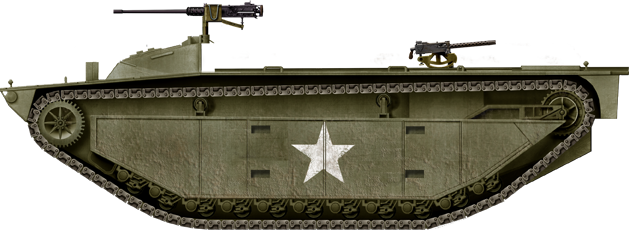
A regular US Army LVT-2 Buffalo, late 1942.
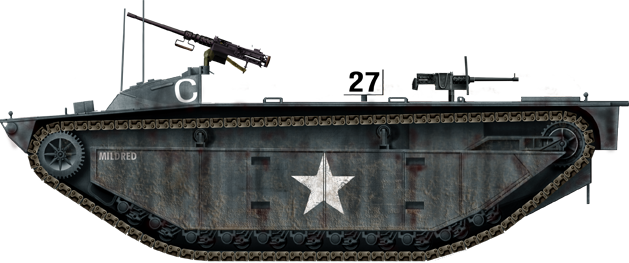
USMC LVT-2 Water Buffalo at Tarawa, 1943.
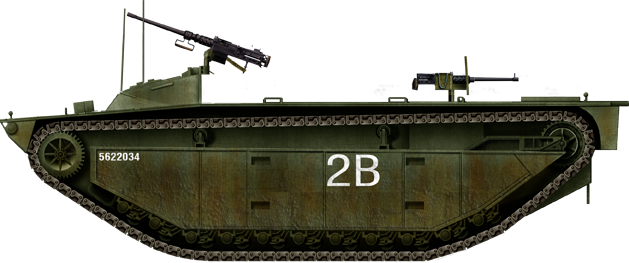
British LVT-2, 79th Armored Division, Nijmegen, Holland, February 1945.
-2_USMC-13thTB-Iwo.png)
LVT-2(A) Buffalo II, USMC 13th Tracked Battalion, Iwo Jima, 1944.
-2_Water_Buffalo_IwoJima.png)
LVT-2(A) Buffalo II, 1st Marine Amphibious Tracked Battalion, Beach red one, Iwo Jima, 1944.
Gallery

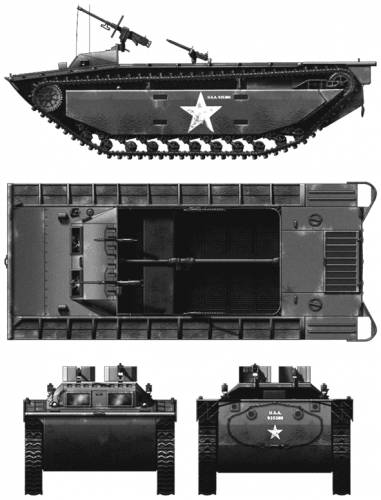
-track-design.jpg)

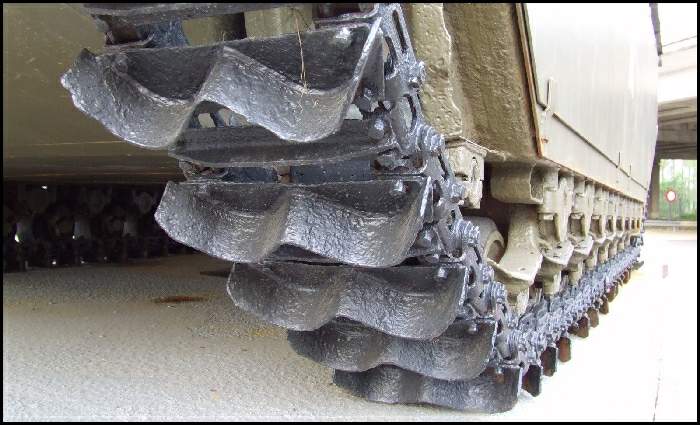

WW2 Tanks




























WW2 tanks posters

All Tiger tanks liveries.

Panther liveries and variants

WW2 Armour - All tanks











Tanks aces and single tanks series

Find more there

Museums, Movies, Books & Games
The Tanks and Armor in pop culture
Tanks and armored vehicles in general are only really grasped when seen first person: The mass, the scale, it's all there. Explore also the way tanks were covered in the movie industry, in books and in video games.Movies:
Best tanks movie on warhistoryonline.com
On imdb.com
On bestsimilar.com/
miltours.com
liveabout.com/
watchmojo.com
Video Games:
pcgamesn.com
historyhit.com
levvvel.com
vg247.com/best-tank-games
mmobomb.com/
alienwarearena.com

